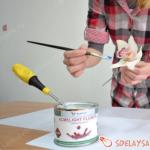When to open roses in spring
Greetings, friends! The rose is the recognized queen of flowers and requires a special, "royal" treatment. It does not tolerate prolonged frosts, so the bushes are covered for the winter, and opened back in the spring. And the main thing is to do it on time, since an untimely opening can destroy even a successfully overwintered plant. In spring, an ambient temperature of -10 C can destroy a capricious plant.
The main thing is on time
When to open roses in spring? If the time for severe frosts and prolonged frosts has passed, but the weather has not spoiled us with high daytime temperatures, then it's time to open the rose. But, on the other hand, a sharp transition from high humidity during shelter to drying by the wind, from low temperatures at night to high daytime temperatures can negatively affect roses. Therefore, roses after winter should be opened gradually. If the flowers for the winter were covered only with spruce branches and lutrasil (covering material), then you can take your time with the opening of roses and open them completely when the earth thaws.
Usually roses open from mid-April to early May, and in more northern regions - from early May to early June. By this time, the ground should already be thawed, and this will be a signal for the full opening of these plants.
- If you covered roses for the winter with dry leaves, small branches or spruce branches, remove them gradually, as the soil thaws.

The first step is to remove some of the snow from the flower area, then make small grooves to drain the melt water to avoid flooding.
- Standard young roses, bent down for the winter, after removing the winter "shelter" are left in a bent state for a couple of days, and only after the roses get stronger, they carefully raise them and fix them to the pegs.
- Roses growing in tubs can be taken out to a bright (not sunny) place without fear. But if the threat of frost has not yet disappeared, then it is better to bring them indoors at night.
After the remaining snow melts on its own, gently loosen the ground slightly (to the depth of thawing), thereby allowing the plant to “breathe”.
As soon as the threat of a return of cold weather has passed, the roses can be completely rescued from the shelter. It is best to do this in the evening, and if the weather is cloudy, you can do it during the day.

And then what?
- Remove the excess layer of earth or distribute it evenly in the rose garden. Those. rake the land from the plants with which they were heaped up for the winter and level it.
- When the roses are fully open, you need to cut off all the "non-living" parts of the plant. As well as diseased parts of the plant, in order to prevent the further spread of fungal diseases.
- Spring pruning roses. Bushes that gave abundant growth last summer are cut higher, leaving a large number of buds, and poorly developing ones - short.
- Spray plants to prevent diseases. Treat with 1% copper sulphate (0.1 kg per 10 liters of water) or a solution of bright pink potassium permanganate using a brush or soft brush. If mold is found on the plant, then it must be removed before processing with these agents.
- If the roses, after opening, were in dry soil, it is necessary to water it.
- Make a feed.

If the roses are frozen
Sometimes, when you open roses, you can see that some of the plants are very cold, which does not mean at all that the bushes have died. Cold-resistant varieties have a sufficient number of "sleeping" buds in stock, from which the rose can resume its growth. Frozen bushes during the winter should be cut short and kept moist.




